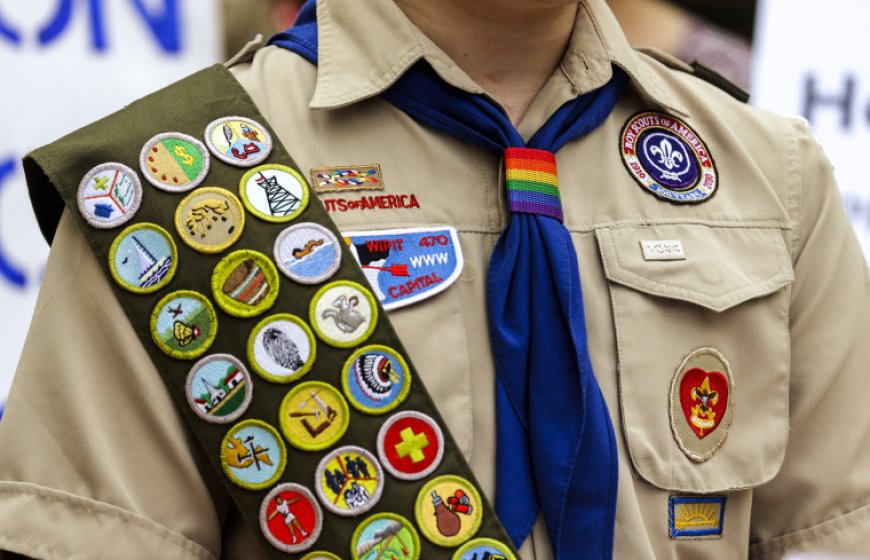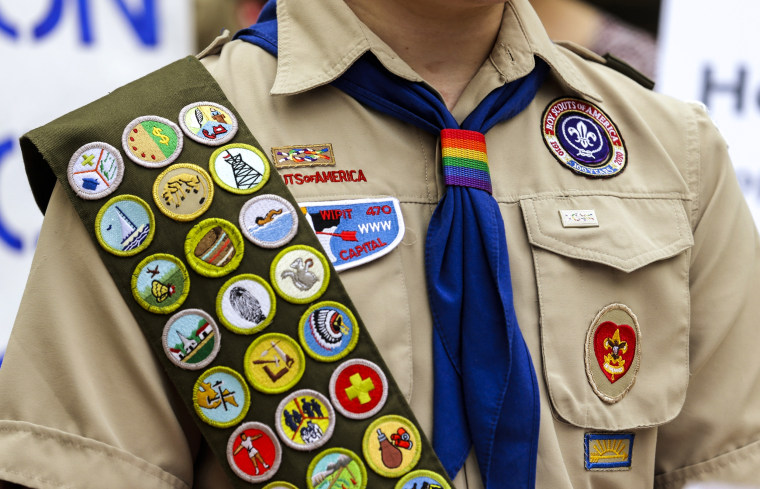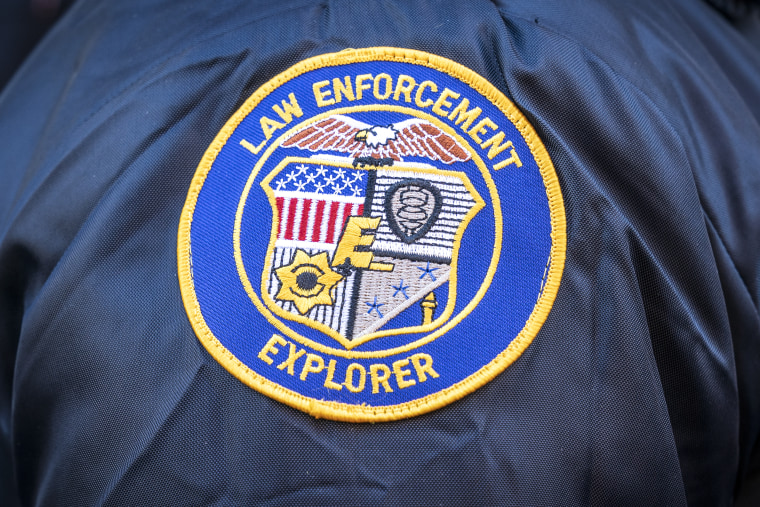A police youth program is plagued by sexual abuse allegations across the U.S.
Boy Scouts’ police Explorer program has faced over 200 sexual misconduct accusations NBC News

The Boy Scouts and the Issue of Abuse in Explorer Programs
This article focuses on the issue of abuse within Explorer programs, which are affiliated with the Boy Scouts. It highlights the need for stronger oversight and adherence to the Sustainable Development Goals (SDGs), particularly Goal 16: Peace, Justice, and Strong Institutions.
Overview of Explorer Programs
- Explorer programs vary in structure across different departments.
- Participants are generally required to maintain good academic performance, attend program meetings, and demonstrate good moral character.
- The curriculum may include community service, firearms training, and evidence collection.
The Role of Ride-Alongs
- Ride-alongs, where participants accompany officers during patrols, are a key component of many Explorer programs.
- Each agency has its own rules for ride-alongs, such as time limits or rotating officers.
- The Boy Scouts have an exception to their “two-deep” leadership rule for police ride-alongs in Explorer programs, allowing Explorers to ride alone with an officer.
Abuse Allegations and Lack of Oversight
- Several departments run their Explorer programs with minimal oversight, often by a single precinct or individual officers.
- Some agencies only made policy changes after instances of misconduct occurred.
- Lawsuits have been filed against the Boy Scouts and Learning for Life, alleging that they were aware of the failure of police departments to prevent sexual abuse in Explorer programs.
Response from the Boy Scouts
- The Boy Scouts responded to the allegations by stating that child sexual abuse is a societal problem.
- They argued that they were not responsible for the abuse because the officer had violated Explorer policies.

Settlement and Accountability
- The Boy Scouts settled with over 82,000 individuals who claimed to have been abused as minors in Scouting programs, but it is unclear how many of these cases involved Explorer programs.
- Michael Johnson, a former police detective hired by the Boy Scouts, raised concerns about the lack of clear boundaries and accountability in Explorer programs.
- Johnson was fired by the Boy Scouts in 2020 and became a critic of the organization’s handling of abuse cases.
Consequences for Abusive Officers
- Out of the 156 officers identified in connection with abuse allegations, at least two-thirds faced professional or legal consequences.
- About half of those charged were sentenced to time behind bars, and some had to register as sex offenders.
- In some cases, officers accused of abuse or inappropriate behavior faced reprimands or suspensions but kept their jobs.

Impact on Victims
- Victims of abuse in Explorer programs have experienced post-traumatic stress disorder, depression, and anxiety.
- Some victims have shared their trauma in lawsuits and at sentencing hearings.
Ongoing Investigations and Public Interest
- An investigation into the case of Sandra Birchmore, who died under suspicious circumstances, is ongoing.
- True-crime enthusiasts have sparked speculation and online discussions about Birchmore’s death, leading to calls for further investigation.
It is crucial for organizations like the Boy Scouts to prioritize the safety and well-being of participants in their programs. By adhering to the SDGs, particularly Goal 16, they can contribute to creating a more just and secure society for young people.
SDGs, Targets, and Indicators
1. Which SDGs are addressed or connected to the issues highlighted in the article?
- SDG 3: Good Health and Well-being
- SDG 4: Quality Education
- SDG 5: Gender Equality
- SDG 10: Reduced Inequalities
- SDG 16: Peace, Justice, and Strong Institutions
2. What specific targets under those SDGs can be identified based on the article’s content?
- SDG 3.7: By 2030, ensure universal access to sexual and reproductive health-care services, including for family planning, information, and education, and the integration of reproductive health into national strategies and programs.
- SDG 4.7: By 2030, ensure that all learners acquire the knowledge and skills needed to promote sustainable development, including, among others, through education for sustainable development and sustainable lifestyles, human rights, gender equality, promotion of a culture of peace and non-violence, global citizenship, and appreciation of cultural diversity and of culture’s contribution to sustainable development.
- SDG 5.2: Eliminate all forms of violence against all women and girls in the public and private spheres, including trafficking and sexual and other types of exploitation.
- SDG 10.2: By 2030, empower and promote the social, economic, and political inclusion of all, irrespective of age, sex, disability, race, ethnicity, origin, religion or economic or other status.
- SDG 16.2: End abuse, exploitation, trafficking, and all forms of violence against and torture of children.
3. Are there any indicators mentioned or implied in the article that can be used to measure progress towards the identified targets?
- Indicator for SDG 3.7: Percentage of women and girls aged 15-49 years who have undergone female genital mutilation/cutting, by age group.
- Indicator for SDG 4.7: Percentage of students in primary education who have achieved at least a minimum proficiency level in (i) reading and (ii) mathematics, by sex.
- Indicator for SDG 5.2: Percentage of women and girls aged 15-49 years who have experienced physical or sexual violence by a current or former intimate partner in the previous 12 months.
- Indicator for SDG 10.2: Proportion of people living below 50 percent of median income, by age, sex, and persons with disabilities.
- Indicator for SDG 16.2: Number of victims of human trafficking per 100,000 population, by sex, age group, and form of exploitation.
Table: SDGs, Targets, and Indicators
| SDGs | Targets | Indicators |
|---|---|---|
| SDG 3: Good Health and Well-being | Target 3.7: By 2030, ensure universal access to sexual and reproductive health-care services, including for family planning, information, and education, and the integration of reproductive health into national strategies and programs. | Indicator: Percentage of women and girls aged 15-49 years who have undergone female genital mutilation/cutting, by age group. |
| SDG 4: Quality Education | Target 4.7: By 2030, ensure that all learners acquire the knowledge and skills needed to promote sustainable development, including, among others, through education for sustainable development and sustainable lifestyles, human rights, gender equality, promotion of a culture of peace and non-violence, global citizenship, and appreciation of cultural diversity and of culture’s contribution to sustainable development. | Indicator: Percentage of students in primary education who have achieved at least a minimum proficiency level in (i) reading and (ii) mathematics, by sex. |
| SDG 5: Gender Equality | Target 5.2: Eliminate all forms of violence against all women and girls in the public and private spheres, including trafficking and sexual and other types of exploitation. | Indicator: Percentage of women and girls aged 15-49 years who have experienced physical or sexual violence by a current or former intimate partner in the previous 12 months. |
| SDG 10: Reduced Inequalities | Target 10.2: By 2030, empower and promote the social, economic, and political inclusion of all, irrespective of age, sex, disability, race, ethnicity, origin, religion or economic or other status. | Indicator: Proportion of people living below 50 percent of median income, by age, sex, and persons with disabilities. |
| SDG 16: Peace, Justice, and Strong Institutions | Target 16.2: End abuse, exploitation, trafficking, and all forms of violence against and torture of children. | Indicator: Number of victims of human trafficking per 100,000 population, by sex, age group, and form of exploitation. |
Copyright: Dive into this article, curated with care by SDG Investors Inc. Our advanced AI technology searches through vast amounts of data to spotlight how we are all moving forward with the Sustainable Development Goals. While we own the rights to this content, we invite you to share it to help spread knowledge and spark action on the SDGs.
Fuente: nbcnews.com

Join us, as fellow seekers of change, on a transformative journey at https://sdgtalks.ai/welcome, where you can become a member and actively contribute to shaping a brighter future.







